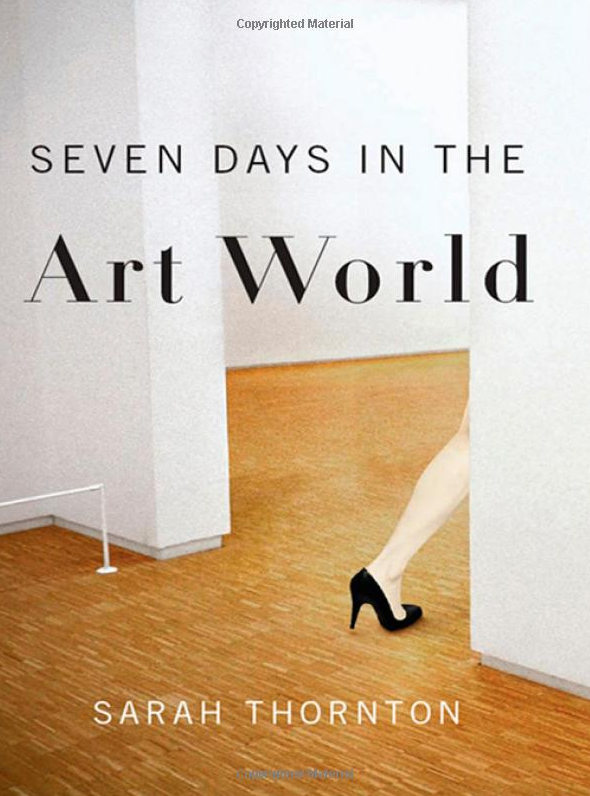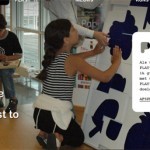Got an e-mail from Eveline Wawou this week - she represents artists that make art objects…
Between price and value
 Have not blogged for a while – after Galaxy, the wind was out of my sails a bit. So I took a week off from both art and project management and concentrated on some very physical activities – for me, relaxation is never a period of dolce far niente. Now my garden looks nice. And my house is tidy. And I went back to the project management thing (just finished two days of teaching). Am re-starting the art thing, too.
Have not blogged for a while – after Galaxy, the wind was out of my sails a bit. So I took a week off from both art and project management and concentrated on some very physical activities – for me, relaxation is never a period of dolce far niente. Now my garden looks nice. And my house is tidy. And I went back to the project management thing (just finished two days of teaching). Am re-starting the art thing, too.
Re-starting with a handicap. Because of a book that has been travelling with me for a while: Seven Days in the Art World. I usually devour books, but this one got read bit by bit over a longer period of time. It describes the booming of the art market, a loose network of overlapping subcultures held together by a belief in art. Or rather (this is me speaking) by a belief in the monetary value of art. It was a good read, but also a bit worrysome. For the days in question are all about selling and buying, about ‘making’ an artist and developing sales potential: art as the ultimate commodity. “… success is likely to be the result of the market’s rapacious appetite for the two-dimensional, easily domesticated medium [of painting] (Page 64)
Now I’ve never had much of a problem with this notion – what, a purist, me? Still, the book depressed me. If this is the real-life art world, how am I ever going to make my way?
From the 2013 Art Market Report from Galerie St Etienne (NY):
Hyperinflation at the upper reaches of the art market distorts the relationship between price and value, with highly publicized record-breaking sales obscuring more ambiguous results. As the traditional arbiters of cultural significance—scholars, curators and critics—shuttle back and forth between the non-profit and for-profit sectors, it is becoming impossible to find an area of the art world that has not been infiltrated by financial considerations. Conventional art criticism no longer has much influence, and museum agendas are routinely shaped by wealthy collectors. The melding of the art and fashion worlds reflects a shared vision based on trendsetting, self-promotion and marketing. All the foregoing tendencies favor short-term monetary gain at the expense of deeper aesthetic appreciation, and, ironically, reduce the chances that the art in question will retain its value over the long term.
So I’d need to become a brand ….. Then there is this other notion I’m interested in: art as the new religion.
One theme that runs through the narratives of Seven Days in the Art World is that contemporary art has become a kind of alternative religion for atheists. The artist Francis Bacon once said that when ‘Man’ realizes that he is just an accident in the greater scheme of things, he can only ‘beguile himself for a time’. He then added: ‘Painting, or all art, has now become completely a game by which man distracts himself … and the artist must really deepen the game to be any good at all.’ For may art world insiders and art aficionados of other kinds, concept-driven art is a kind of existential channel through which they bring meaning to their lives. It demands leaps of faith, but it rewards the believer with a sense of consequence. Moreover, just as churches and other ritualistic meeting places serve a social function, so art events generate a sense of community around shared interests. (Seven Days page 14)
Art as the individual’s way to alleviate existential Angst? There is distraction, but very little Troost in modern art : comfort, consolation, solace.
Renton hadn’t made up his mind who should win (the Turner Prize): ‘The greatest critical work in my mind is the Talmud,’ he said. “It’s one argument superseding another – an ongoing, open-ended dialogue that allows multiple points of view. For me, that is what art is about.’ (Seven Days, page 130)
| « Galaxy in motion | <-- previous post | next post --> | Piece for two hands » |
|---|







